I got into guitar building in 1992 after a Status bass I owned got broken at a gig I playing at...to cut a long story short...it was a fairly riotous gig and the bass ended up destroyed...
As it had a practically indestructible graphite neck, I soon formulated a plan to return it to being a playable instrument, which involved making a new body for it. Armed with nothing more than an electric drill, an electric jig saw and some chisels I set about making a new body...suffice to say it went fairly well and the guitar building bug had bitten...
I have long been attracted to well worn looking guitars and basses, I could go into a guitar shop where there would be rows and rows of shiny new guitars, but my eye would seem to automatically seek out the second hand stuff...which I found to be far more interesting to look at...
In the early days of Bravewood Guitars, I made custom basses with exotic woods and mainly active circuitry, at this stage it was nothing more than a paying hobby, I made guitars for friends and local musicians. Then the ‘relic’ guitar thing started to happen, most of what I saw looked nothing like real vintage guitars to my eye...and it wasn’t long before I thought ‘I can do better than that...’
The first vintage replica I made was a ‘57 ‘S’ type...I took it to a local jam session, just to see if I could have some fun making people think it was real.....it sold within 10 minutes...that got me thinking......
I started building replica guitars full time in 2002, and I’m still doing it and loving it....
My guitars are completely hand built, both body and neck are painstakingly hand crafted
to exacting vintage dimension and detail. Over the years I have done much restoration
work on real pre-
I source materials as close to the originals as possible, over the years I have found
suppliers of vintage correct hardware, I spray 100% nitro-
Below (in no particular order of importance) are some examples of the details that sets a Bravewood guitar apart from others....
Click HERE to see the build process of a Bravewood guitar...
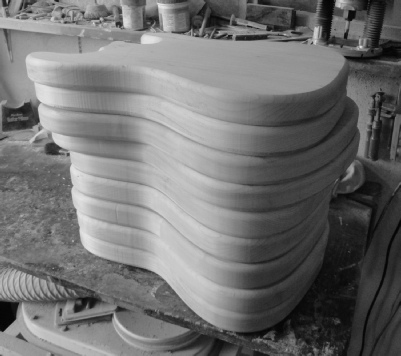
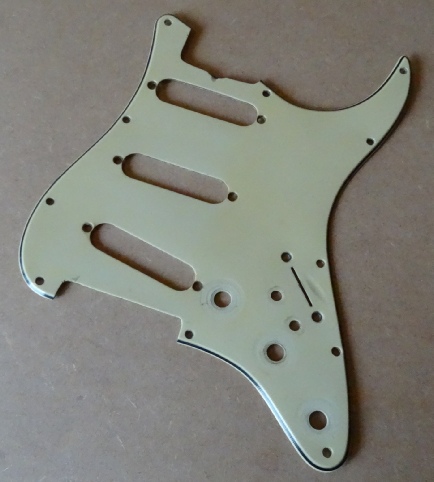
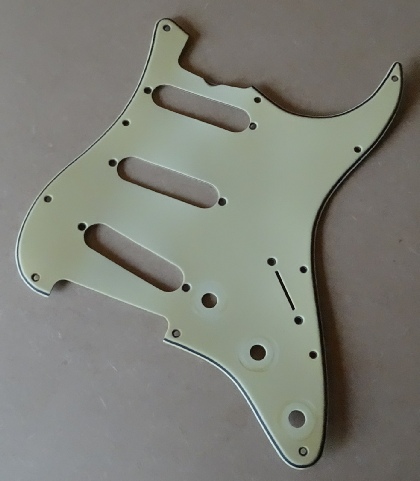
The pickguard above on the left is a genuine 1962 example (note 2 extra switch holes drilled next to selector switch slot), the pickguard on the right is a Bravewood repro. These are hand made in the Bravewood workshop using material that closely matches the original in colour and thickness, they are cut to vintage spec. including the edge bevel, which as the picture below demonstrates matches the original ‘62 perfectly...

Top guard is the original ‘62, lower guard the Bravewood repro...
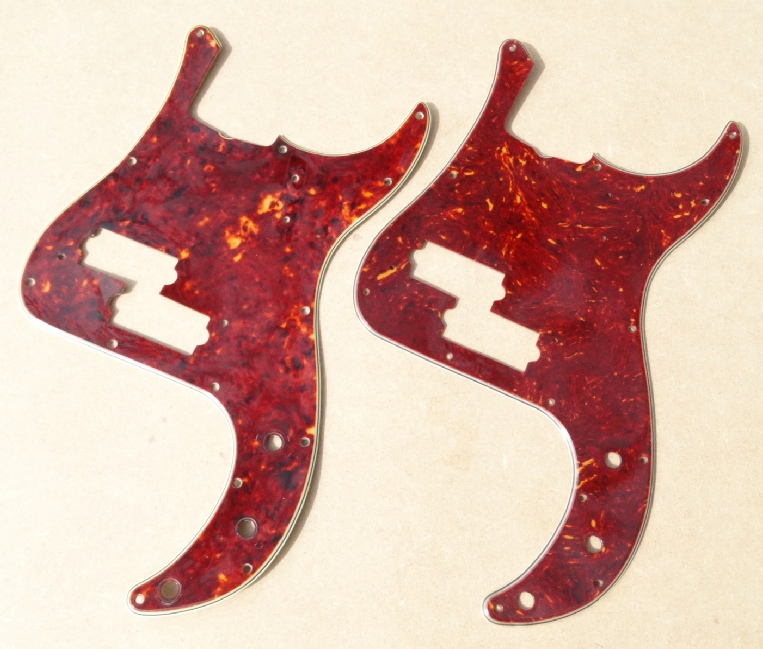
Here’s another pickguard example...the guard on the left is an original ‘63 Precision
bass pickguard, the one on the right a Bravewood...again, made from 4 ply material
the same thickness and colour, the tortoise shell material I use is actually nitro-
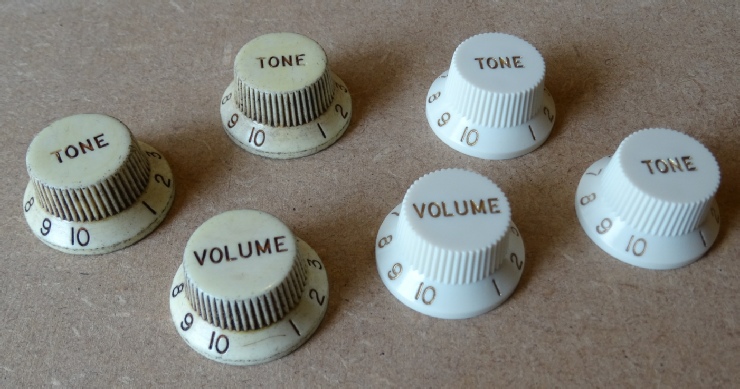
Above are some examples of aged knobs, the knobs on the left started out exactly the same as the knobs on the right...

Aged ‘reverse’ bass tuner on the left (Gotoh repro)...and the real thing on the right (1962 Kluson original).
This type of tuner appeared from 1951 and up until around 1967. There were subtle changes along the way, but the design by and large remained unchanged until the introduction of the ‘lollipop’ or ‘oval’ tuners, first introduced on the ‘66 Jazz Bass, then later on other models, this was fairly short lived as it was replaced by the updated forward tuning ‘elephant ear’ tuners introduced in mid ’68.
As most of what I build is pre-
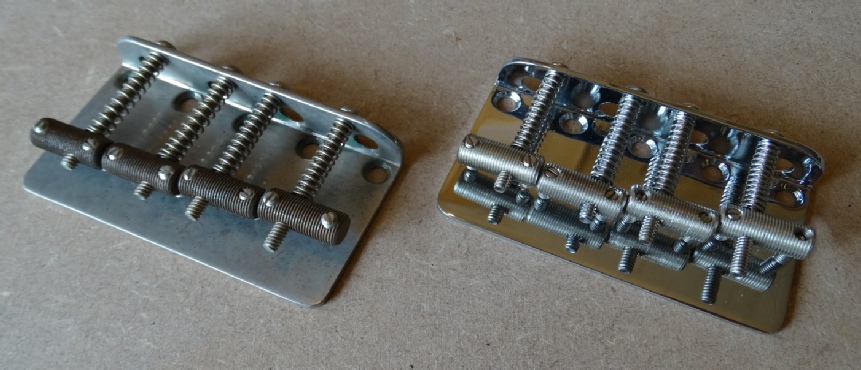
Here’s a couple of ‘58 style bass bridges (finer threading on the saddles than the later type), the one on the left has been through the Bravewood ageing process, the one on the right is fresh out of the packet...
More info to be added...stay tuned...

The above picture shows numerous necks/neck blanks at various stages of completion, I offer all types from one piece with walnut skunk strip to slab board...and even the later ‘veneer’ type board, either rosewood or maple cap.
Making Guitars

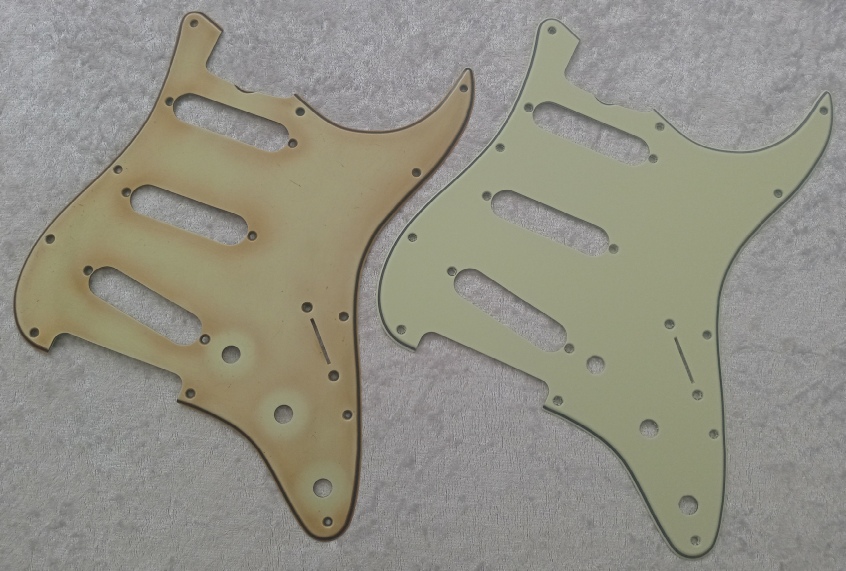
Another example above of an aged Bravewood pickguard, the one on the left is aged, the one on the right is before the ageing process. Both are completely hand made in the Bravewood workshop.
The picture below shows the lustre on the aged guard, too many repro aged guards are dulled too much, even well used originals often retain a certain level of ‘shine’...